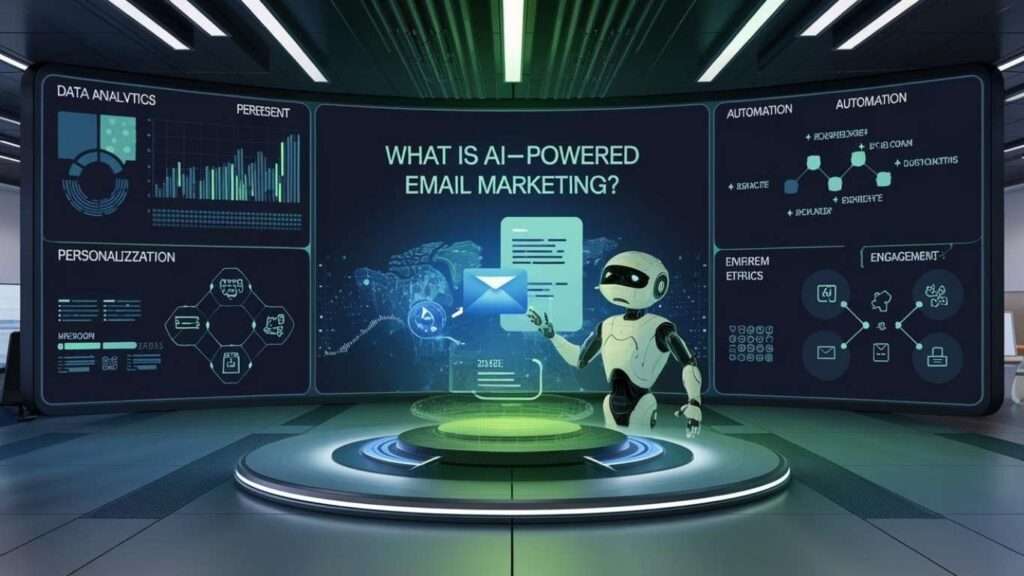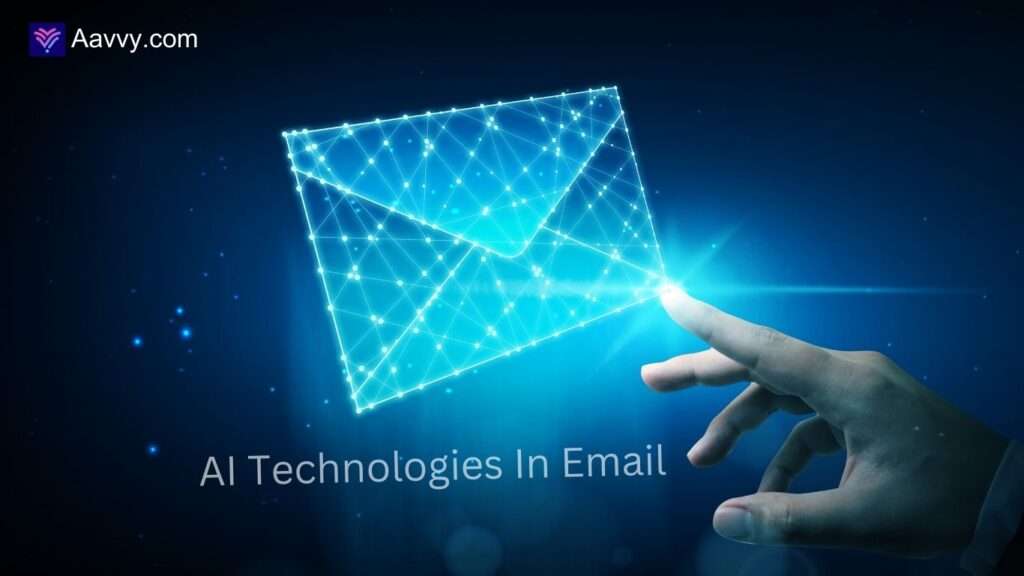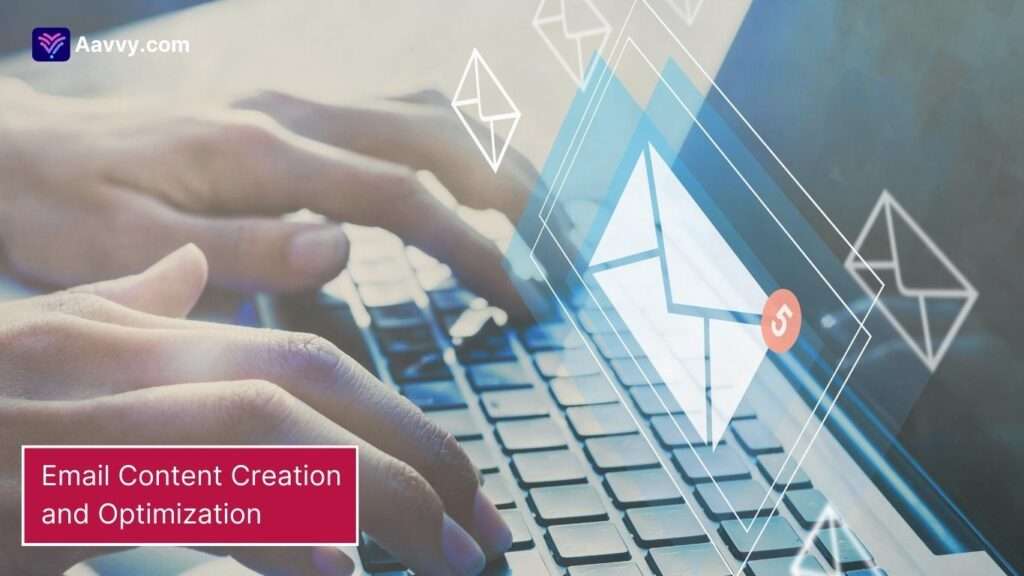AI vs Traditional Email Marketing: Which Performs Better?

Hello! Are you interested in email marketing? Good choice!
It is an extremely important tool for companies to retain their customers.
You’ve probably heard that artificial intelligence or AI is making waves in the marketing world, right? Well, it also changes the email marketing game! But how does AI compare to traditional email marketing tactics?
That’s exactly what we’re going to talk about today.
In this article, we’ll take a closer look at both AI-powered and traditional email marketing to see which one performs better.
Does AI really make a big difference? Or are traditional methods still strong enough to compete? Let’s dive in and compare!
I. Understanding Traditional Email Marketing
Traditional email marketing is a common method that businesses use to connect with their customers through email.

This approach helps companies promote their products, share updates, and build strong relationships with their audience.
In this section, we will break down traditional email marketing, including its key components, strengths, and challenges.
Key Components of Traditional Email Marketing
- Email Lists:
An email list is a group of email addresses gathered from people who show interest in a business’s products or services. Businesses often create these lists by using various methods to collect contact information from potential customers.
- Asking customers to sign up on their website
- Offering special deals or giveaways
- Collecting email addresses during purchases
Having a strong email list is crucial because it lets businesses communicate with customers who have expressed interest and want to receive updates, ultimately fostering strong customer relationships and driving engagement.
- Email Campaigns:
Email campaigns are a series of messages sent to customers over time. They serve various goals:
- Announcing sales or discounts
- Introducing new products
- Sharing helpful tips or articles
Campaigns keep customers engaged and informed about your brand.
- Email Templates:
Email templates provide pre-designed layouts that help businesses create polished emails. Key elements include:
- Space for text, images, and links
- An eye-catching CTA button
Using templates speeds up the email design process and maintains a professional appearance.
Strengths of traditional email marketing
- Direct Communication:

Email marketing enables companies to establish a personal touch with customers. This connection nurtures a sense of trust and encourages loyalty, making customers more likely to choose that brand for their purchases.
- Cost-Effective:
While TV or print ads can strain budgets, email marketing offers cost-efficient outreach. Its affordability enables small businesses to connect with their customers effectively, without the need for large advertising investments.
- Measurable Results:
An excellent aspect of email marketing is the easy access to campaign performance data. Companies can assess metrics such as opens, clicks, and conversions, providing them with the knowledge to understand which tactics are working and where improvements are needed.
Limitations and Challenges of Traditional Email Marketing

1. Manual Effort:
Traditional email marketing involves a number of manual operations, such as email creation, list maintenance, and performance tracking. These responsibilities might be daunting for small enterprises with minimal resources.
2. Limited Personalization and Spam Filters

Traditional email marketing has issues, particularly with personalization limitations and spam filters. Although organizations can personalize emails, they frequently miss out on the advanced customisation that newer technology provides.
Imagine receiving an email with your name but no content related to your interests. Furthermore, emails may be intercepted in spam filters due to poor design or being flagged as spam, resulting in diminished campaign efficacy.
These barriers make traditional email marketing difficult for customers to engage with.
3. Decreasing Engagement:
People’s inboxes are being struck with emails on a daily basis as social media and other online communication platforms grow in popularity.
This makes it increasingly difficult for businesses to capture their customers’ attention, as emails may be disregarded or deleted before being read.
II. The Rise of AI in Email Marketing
Let’s talk about AI-powered email marketing. It’s when businesses use artificial intelligence to make their email marketing smarter and more efficient.
This technology enables them to produce more individualized and successful email marketing.
What is AI-Powered Email Marketing?

AI-powered email marketing uses cutting-edge technology to make your efforts more effective. It dives deeply into client data, identifying their preferences and patterns.
With this insight, you can create targeted emails that resonate with your target audience, resulting in increased engagement and success.
AI Technologies Used in Email Marketing

AI applies several main technologies in email marketing. For example, machine learning can be used to examine consumer data and predict what they would be interested in.
Natural language processing (NLP) is another useful technique for understanding and creating content for your emails.
These technologies enable you to automate processes, optimize transit times, and tailor your messaging, resulting in more effective campaigns.
How AI is Transforming Email Campaigns
You know what’s awesome? Using AI to transform your email marketing! It enables you to automate email creation and sending while providing analytics to track performance.
This way, you can make data-driven decisions and constantly improve your strategy. By harnessing the power of AI, you’ll stay ahead of the game and crush your email marketing goals!
READ MORE:- The Ultimate Guide to AI Email Marketing in 2024.
III. Performance Comparison: AI vs. Traditional
Now, let’s look at how traditional email marketing compares to AI-driven email marketing in several key aspects, including personalization, content generation, send time optimization, analytics, automation, and deliverability.
Personalization and Segmentation
While traditional email marketing often lacks personalization, AI-driven strategies shine by tailoring messages based on audience preferences.

By segmenting your audience, you can create relevant content for each group, leading to a better connection with your customers and higher engagement levels.
Say goodbye to generic emails and hello to personalized, engaging content with AI-powered email marketing!
Content Creation and Optimization
Traditional copywriting for emails can be time-intensive and might overlook optimization opportunities.

AI-generated content swiftly produces captivating email copy, optimizing subject lines to grab your audience’s attention. Plus, AI simplifies A/B testing! Experiment with various email versions to identify top performers and refine your strategy using valuable data insights.
Analytics and Insights

Traditional email metrics like open and click rates provide some valuable data but may not offer a comprehensive understanding of your campaign’s performance.
AI-driven analytics dive deeper, uncovering crucial trends to guide more informed decisions for future campaigns. Harness the power of predictive analytics to refine your strategy continually, ensuring consistent improvement in your email marketing efforts.
Automation and Scalability
While conventional automation methods have their merits, they frequently require hands-on setup and continuous monitoring.

AI-driven automation elevates your workflows, tailoring them to audience behaviors for smoother large-scale campaign handling.
By saving time and enhancing resource distribution, you can dedicate more focus to strategic decisions as AI takes on the laborious tasks.
Deliverability and Inbox Placement
In the past, better email deliverability hinged on following guidelines and hoping for positive outcomes. AI changes the game by studying deliverability patterns and offering insights to evade spam filters.

Receive AI-backed recommendations for optimal email practices to guarantee your messages land in the inbox, not the spam folder, maximizing campaign results by reaching more subscribers.
Overall, as you can see, AI has a huge impact on email marketing, allowing you to communicate with your audience and reach your marketing objectives more efficiently. If you haven’t used AI in your email campaigns yet, it’s time to examine how it may improve your strategy!
IV. Pros and Cons
When considering email marketing, you should be aware of the advantages as well as disadvantages of employing AI and traditional approaches.
Let’s look at the pros and cons of each to help you find which one is best for you!
Pros and Cons of AI Email Marketing
| Pros | Cons |
|---|---|
| Personalization: AI helps create highly personalized content for better audience engagement. | Implementing AI technology can require significant upfront costs. |
| Automation: AI-driven automation streamlines workflows and improves efficiency. | Complexity: AI tools can be hard to use for beginners. |
| Better Analytics: AI gives deep insights into campaign performance. | Dependence on Data: AI needs accurate data to work well. |
| A/B Testing: AI makes it easy to test different email versions. | Data Privacy Concerns: AI’s use of customer data might raise privacy concerns. |
| Content Generation: AI generates engaging email copy and subject lines with ease. | AI is not immune to mistakes, which could impact campaign performance if not monitored closely. |
Pros and Cons of Traditional Email Marketing
| Pros | Cons |
|---|---|
| Traditional emails are written by people, making them feel personal and friendly. | Doing everything yourself means spending more time on email marketing. |
| It’s easy to begin using traditional email marketing without needing fancy tools. | It can be hard to make each email special for every person on your list. |
| Traditional email marketing usually costs less money to get started. | Figuring out how to make your emails better can take a lot of work. |
| You have more control over how your emails look and sound. | Traditional email marketing gives you less information about how well your emails are doing. |
V. The Future of Email Marketing
Some exciting new things are happening in The World of AI email marketing. Future advances will improve and simplify email marketing for everyone.
New AI technologies can help you produce emails faster, better understand your audience, and evade spam filters.
Some popular AI email marketing software is Activecampaing, Hubspot Email Marketing tools, Omnisend, and others.
Improvements in Traditional Email Marketing
Traditional email marketing is also getting better, with new ways to optimize your campaigns. Marketers are finding ways to make emails more personal and effective, making sure your messages reach the right people at the right time.
Why You Should Use AI in Email Marketing
Using AI in email marketing can save you time and improve your results. AI tools can help you create better emails, send them at the best times, and learn from your past campaigns. This makes email marketing easier and more successful for your business.
Looking Ahead
As AI and traditional email marketing continue to evolve, you’ll want to stay informed about the latest trends and tools. By keeping up with these changes, you can make sure your email marketing is always at its best!
VI. Conclusion
We’ve explored the differences between AI and traditional email marketing in key areas such as personalization, content creation, and analytics.
Both methods have their pros and cons, but AI offers some exciting new opportunities to improve your email marketing efforts.
While both AI and traditional email marketing strategies have their strengths, AI-driven approaches provide significant advantages in personalization, efficiency, and data analysis.
However, traditional techniques still offer important lessons on human touch and creativity.
As email marketing continues to evolve, it’s essential to stay open to new ideas and techniques. You can adapt your strategy by incorporating AI tools while staying true to the human elements that make your brand unique.
By combining the best of both worlds, you’ll be well-prepared to tackle the future of email marketing!


